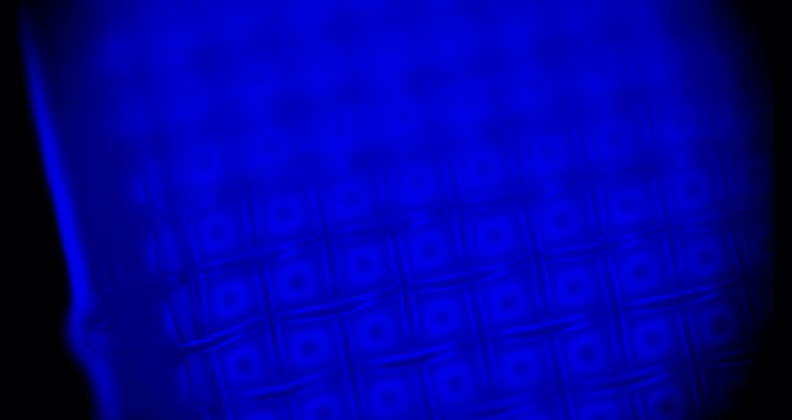Jul 13 2020
Researchers from Curtin University have devised a new technique to achieve a more accurate analysis of microscopic samples by typically making them “glow in the dark,” by using chemically luminescent molecules.
 Controlling chemiluminescence in two dimensions. Image Credit: Dr Yan Vogel.
Controlling chemiluminescence in two dimensions. Image Credit: Dr Yan Vogel.
According to lead researcher Dr Yan Vogel from the School of Molecular and Life Sciences, existing techniques of microscopic imaging are based on fluorescence, implying that light must be shone on the sample during the analysis. Although this technique is effective, it poses certain disadvantages as well.
“Most biological cells and chemicals generally do not like exposure to light because it can destroy things—similar to how certain plastics lose their colours after prolonged sun exposure, or how our skin can get sunburnt,” Dr Vogel added.
The light that shines on the samples is often too damaging for the living specimens and can be too invasive, interfering with the biochemical process and potentially limiting the study and scientists’ understanding of the living organisms. Noting this, we set out to find a different way to analyse samples, to see if the process could successfully be completed without using any external lights shining on the sample.
Dr Yan Vogel, Lead Researcher, School of Molecular and Life Sciences, Curtin University
The researchers were successful in discovering a means to use chemical stimuli to typically make user-selected areas of the samples “glow in the dark,” thereby enabling their analysis without the need to add any potentially damaging external light.
Dr Simone Ciampi, co-author of the study and a Curtin University ARC Future Fellow, stated that to date, it was not technically feasible to excite a dye with chemical stimuli, rather than using high-energy light.
“Before discovering our new method, two-dimensional control of chemical energy conversion into light energy was an unmet challenge, mainly due to technical limitations,” Dr Ciampi noted.
There are few tools available that allow scientists to trigger transient chemical changes at a specific microscopic site. Of the tools that are available, such as photoacids and photolabile protecting groups, direct light input or physical probes are needed to activate them, which are intrusive to the specimen.
Dr Simone Ciampi, Study Co-Author and ARC Future Fellow, Curtin University
Dr Ciampi explained, “Our new method however, only uses external light shining on the back of an electrode to generate localised and microscopic oxidative hot-spots on the opposite side of the electrode.”
“Basically, the light shines on an opaque substrate, while the other side of the sample in contact with the specimen does not have any exposure to the external light at all. The brief light exposure activates the chemicals and makes the sample ‘glow in the dark’,” added Dr Ciampi.
This ultimately addresses two of the major drawbacks of the fluorescence method—namely the interference of the light potentially over-exciting the samples, and the risk of damaging light-sensitive specimens.
Dr Simone Ciampi, Study Co-Author and ARC Future Fellow, Curtin University
Journal Reference:
Vogel, Y. B., et al. (2020) Spatiotemporal Control of Electrochemiluminescence Guided by a Visible Light Stimulus. Cell Reports Physical Science. doi.org/10.1016/j.xcrp.2020.100107.